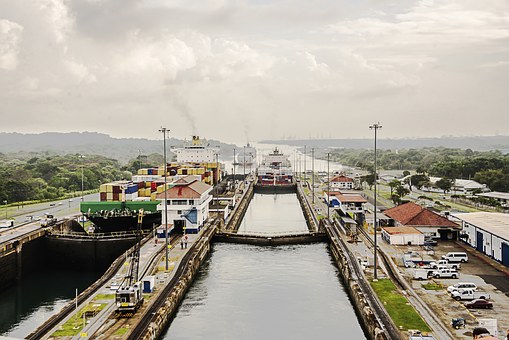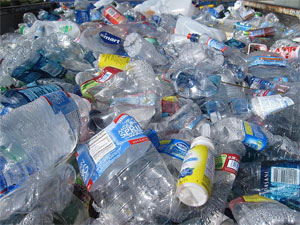Southern California: Land in Crisis
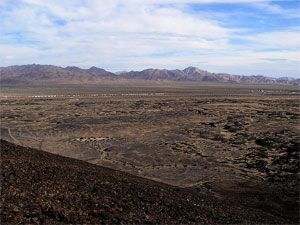
Few know the true extent of the California water crisis because the Southern California region is replete with green lawns, decorative fountains, and gigantic swimming pools. Driving south of Orange County, one can observe the true natural landscape of the region. Between Camp Pendleton and San Diego lie 50 miles of chaparral – barren, dry land covered in sparse shrubs (see Fig. 1). In their attempts to turn this naturally arid land into a green paradise, Californians use an average of 50% more water than people in the Eastern regions of the United States [1]. Because it rains less than 10 inches a year in most southern areas of the state, this water must be taken from elsewhere, particularly the other desert states surrounding California, and Northern California. In fact, while Northern California provides 75% of the state’s water supply, Southern California uses approximately 75% of California’s water resources [2]. This discrepancy points towards Southern California’s water problem: too much use with very little inflow.
Tapping New Water Sources

A lesser-known freshwater source that could also be considered a solution to the water shortage is groundwater. Groundwater often seems to be a more reliable and less precarious water source because no ecological systems depend directly on groundwater, it self-filters, and it can be accessed in most areas, even deserts. Accessing this resource once was as simple as digging a hole in the ground. However, California already uses groundwater faster than it can recharge. After all, the water that recharges underground aquifers can only move a few feet a month, unlike an open body of water, because groundwater passes through layers of porous soil and sand as it flows [5]. California once contained over 50% of the nations’ groundwater aquifers but now contains less than 20% [6]. If these groundwater aquifers empty much further, the gap left behind can cause cave-ins, devastation to lakes and streams, and increased salinity of new groundwater [1]. In some areas of California, the ground itself has dropped over 50 feet due to the excessive removal of groundwater [6]. In a community perched atop this land, using this natural resource is not an effective solution.
Desalination – A Viable Option?

Through the method of reverse osmosis, salt water can be pushed through a membrane at high pressure with microscopic pores that allows pure water to pass through but not salt. In fact, the Water 2025, a national water information guide released by the National Bureau of Reclamation concerning the worsening water shortages in the West, describes desalination through reverse osmosis as the treatment of the future for providing the West with water (see Fig. 3). The fault in this method lies in the waste left behind: salty brine water [5]. Once the water is filtered, the waste drained back into the sea has a salinity level many times more than the natural levels. This increase in salinity kills an abundance of marine life, especially next to the drain, where the brine has not had a chance to be diluted. The closest accessible ocean water can only be filtered so many times before it not only contains very little marine life but also becomes too briny to filter. Diluting this brine with wastewater run off still lacks long-term viability as this process cannot be repeated indefinitely. The high pressures and complex technologies involved make the desalination process very expensive, to the point where the US would potentially need to invest one billion dollars a year even before being able to provide water to a majority of the citizens [8]. Because of the significant costs and risks; desalination cannot act as a truly sustainable solution to the water crisis.
Water Conservation Practices
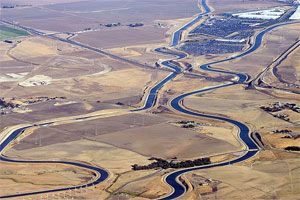
Covering these water stores and sealing their leaks would contribute to California’s water recovery in a significant way. A better-designed, possibly underground, series of aqueducts could better protect the water that is already diverted to Southern California. This new infrastructure could be built in conjunction with new rainwater harvesting systems. In both cities and suburbs, roofs cover a large land area, which means that rainwater falls not onto soil where it can pass through to recharge groundwater sources, but goes directly down storm drains and into the ocean. Because a rainstorm can yield over 50,000 liters in an area smaller than a home, applying rainwater harvesting on a large scale could contribute millions of liters of water to the water system [9]. Collected rainwater could be used without further processing for irrigation or other applications where humans do not ingest it.
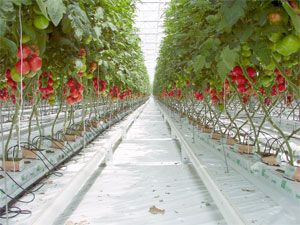
Nonetheless, agricultural changes alone do not have the power to save California. Individual effort to be progressive and conscious of water usage plays an enormous role in conserving water. In the 1990s, aggressive water conservation programs in urban areas of California led to a decrease of up to 28% of water usage, so the potential to create similar change exists [11]. Simple measures can be taken to reduce water usage each day, even without fancy new technologies. For example, using the toilet more than once before flushing saves over 15 gallons a day; turning off the shower while shampooing or shaving can save over 20 gallons per shower; and laundering only full loads of clothes can save anywhere from 30 to 60 gallons each load [13]. Engineers are also designing low-water usage toilets, washing machines, and dishwashers in order to reduce water consumption while still maintaining a comfortable lifestyle. Other methods of individual conservation include sweeping a driveway instead of hosing it, or going to a car wash, where water is often recycled, instead of washing the car at home. Planting native plants that require less water instead of a water intensive lawn also significantly reduces individual water use. The water-saving possibilities continue – engineering concepts can be applied to almost every human procedure to promote conservation. Industrial refining processes, construction, and transportation can all be reformed by engineers seeking to save water and save California.
Conclusion
References
-
- [1] T. Arrandale. “Western Water.” Editorial Research Reports. Internet: http://library.cqpress.com/cqresearcher/cqresrre1987013000, 1987.
- [2] S.J. Herzog. “California water: The new gold.” Appraisal Journal, vol. 64.2, pp. 134-48, 1996.
- [3] M.H. Cooper. “Water Shortages.” Internet: http://library.cqpress.com/cqresearcher/cqresrre2003080100, pp. 649-72, 2003.
- [4] M.C. Blumm and T. Schwartz. “Mono Lake and the evolving public trust in Western water.” Issues in Legal Scholarship. Internet: http://find.galegroup.com/gtx/start.do?prodId=EAIM, 2003.
- [5] G.T. Miller, and S. Spoolman. Environmental Science Problems, Connections and Solutions. Belmont: Brooks Cole, 2007.
- [6] F. Barringer. “As Aquifers Fall, Calls to Regulate the Use of Groundwater Rise.” New York Times, May 14, 2009.
- [7] R. Netting. “Water Cycle.” NASA Science. Internet: http://science.nasa.gov/earth-science/oceanography/ocean-earth-system/ocean-water-cycle/, Apr. 15, 2010.
- [8] P. Norling and F. Masciangioli. “Water and Sustainable Development.” Opportunities for the Chemical Sciences – A Workshop Report to the Chemical Sciences Roundtable. Ed. . Tina M. National Academies, 2004.
- [9] S.J. Farenga, D. Ness, and J.A. Craven. “Water harvesting, part 1.” Science Scope. Internet: http://find.galegroup.com/gtx/start.do?prodId=EAIM&userGroupName=usocal_main, vol. 31.5, pp. 58, 2008.
- [10] P.G. Marshall. “California: Enough water for the future?” Internet: http://library.cqpress.com/cqresearcher/cqresrre1991041900, pp. 222-37, 1991.
- [11] R.A. Berk, D. Schulman, et al. “Measuring the impact of water conservation campaigns in California.” Climatic Change. Internet: http://find.galegroup.com/gtx/start.do?prodId=EAIM, vol. 24.3, pp. 233-49, 1993.
- [12] F. Wu. The Future of Genetically Modified Crops Lessons from the Green Revolution. Internet: http://wf2dnvr9.webfeat.org/y9TGN11200/url=http://site.ebrary.com/lib/uscisd/docDetail.action?docID=10152644&page=1 New York: RAND Corporation, 2004.
- [13] L. Heaton. Water Usage. Frankfort: University of Kentucky, 1999.


